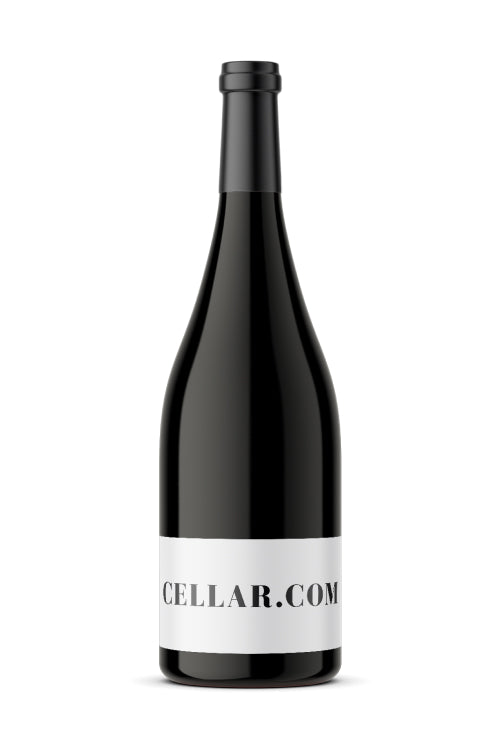1
/
of
1
Henri Clerc & Fils Bâtard-Montrachet Grand Cru - 1983 (750ml)
Henri Clerc & Fils Bâtard-Montrachet Grand Cru - 1983 (750ml)
Regular price
$149.99
Sale price
$149.99
Regular price
$224.99
Unit price
/
per
Availability:
1 In Stock
$25 Shipping on Orders +$299
Couldn't load pickup availability
Share :

- varietal
- Region
- Sub - Region
- Type
- Reviews
Product Review
Producer note: Gérard Boudot told me that he believes the 99s are perfectly balanced, high praise indeed from someone who tends to be his own worst critic when it comes to his wines. He reports that the 99 crop was perfectly clean with very thick, ripe skins. He realized yields of 54 hl/ha in his 1ers and about 50 hl/ha among his grands crus. The wines averaged around 13% natural alcohol with the Montrachet having the highest at 13.6% and the La Garenne the lowest at 12.8%.
Gérard said that he harvested considerably less than many of his neighbors because he implemented a strict ébourgeonnage (eliminating excess shoots) early on and thus, he was better able to contain the vintage's natural vigor. When the floraison occurred, it was very homogeneous and thus, most of his parcels were ready to harvest at about the same time and ripening within bunches was quite even. Further, about 10 days before the harvest, it was warm and clear and there was a north wind, which eliminated any worries of rot from humidity. I
Product Score
90
Its adaptability to different soils and climates, and malleability in the wine room make Chardonnay one of the most popular and ubiquitous grapes. Responsible for some of the world’s most thrilling white wines wines including Champagne, it is in its homeland of Burgundy with villages such as Chablis, Meursault and Puligny-Montrachet that producers craft arguably some of the world’s finest wines. Chardonnay is also synonymous with California, where it can display riper, tropical fruit flavors, rather than the more restrained stone fruit and steely, mineral qualities often associated with its Old World and cool climate counterparts. While there are terrific fresh and vibrant Chardonnays made solely using stainless steel, the grape also knits terrifically well with oak, lending greater depth and weight in the form of a nutty, toasty and somtimes buttery component.
Two hundred miles south east of Paris lies the famous and historic wine region, known in French as Bourgogne. The Cote d'Or, the heartland of the region, consists of two distinct sub-regions split on either side of the town of Beaune.The Côte de Nuits to the north, includes the famous villages of Vosne-Romanee, Gevrey-Chambertin, and Nuits-Saint-Georges and are known primarily for making red wine from Pinot Noir.Although The Côte de Beaune to the south still makes some magnificent reds (see Volnay and Pommard), white wine made from Chardonnay is the main focus. The most famous villages are Puligny-Montrachet and Meursault. Burgundy has three other important regions. The village of Chablis (exclusively Chardonnay) encompassing the region's most northerly vineyards. The Côte Chalonnaise and Mâconnais to south are quantitatively speaking more important. Agriculture is more diverse with a significant portion of the land devoted to livestock and arable farming.
In the words of Burgundy authority, Clive Coates MW, "Puligny-Montrachet is the greatest white wine commune on earth". Although smaller than its highly reputable adjacent neighbors Chassagne-Montrachet and Meursault, Puligny has four of Burgundies six white Grand Crus. While Le Montrachet and Batard-Montrachet are shared with Chassagne-Montrachet, Chavalier-Montrachet and Beinvenies-Batard-Montrachet lie wholly within the village. Most of it's 13 premier crus roughly continue north east towards Meursault and frequently reflect the style of the grand cru which they aligned in terms of elevation. For instance, those adjacent and continuing from Batard, such as Les Lucelles, Claviollon, Les Perrieres, Les Combettes, and Les Referts, exhibit a similar rich, plump and exotic style and are less like those further up the hillside which are level with Chevalier and Le Montrachet. Most of the villages produce is contracted to negociants in Beaune, however the few growers who are based in the village, Louis Carillon, Leflaive, and Etienne Sauzet are perhaps the finest.
White wine is a wine whose color can be pale-yellow, yellow-green, and yellow-gold colored. The wine is produced from a variety of grape varieties. The flavor and color comes from the juice of the grape and sometimes the skin of the grape as well. Interestingly, not all white wine comes from white grapes. Some select red grapes are used as in Champagne.


